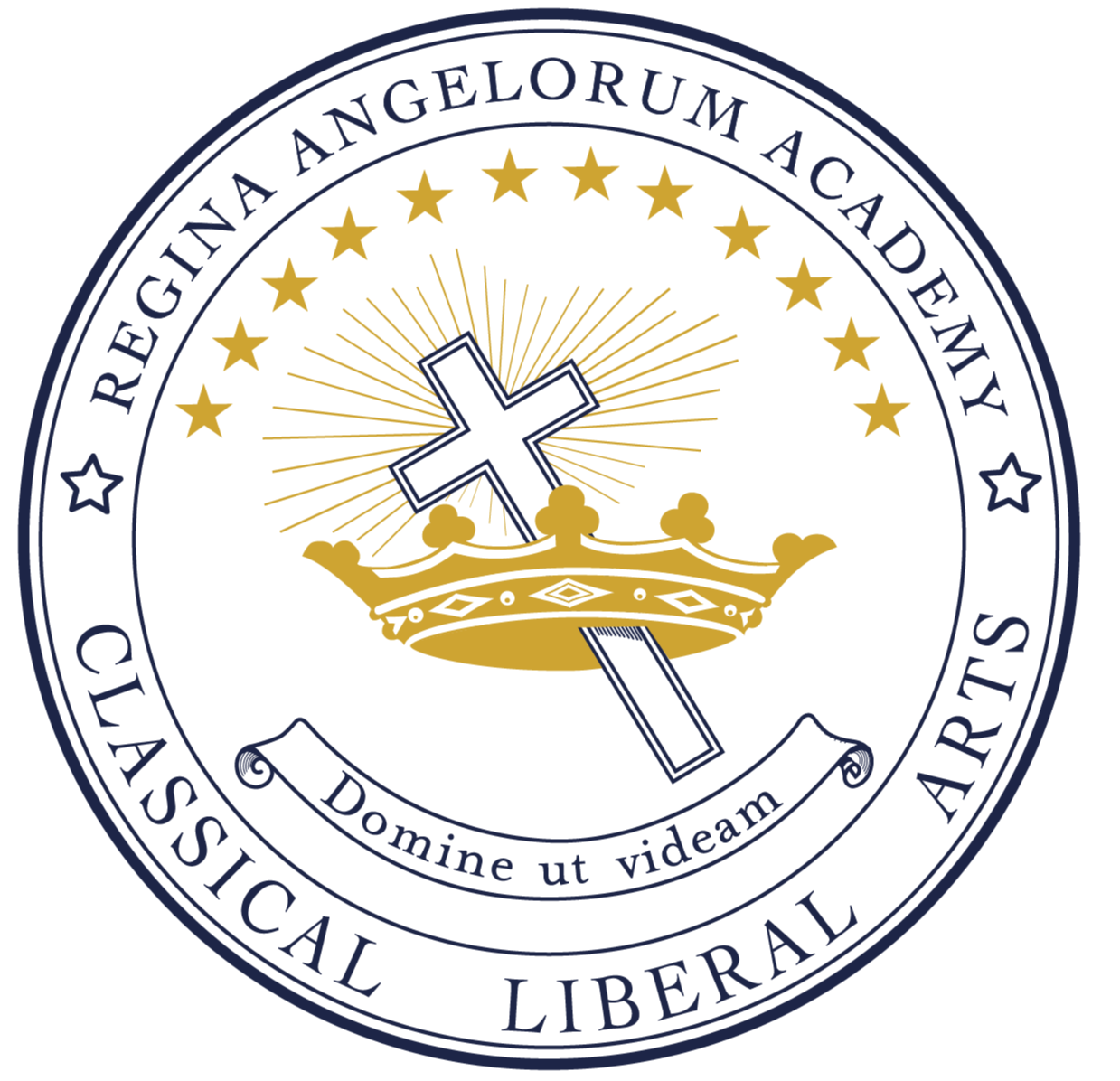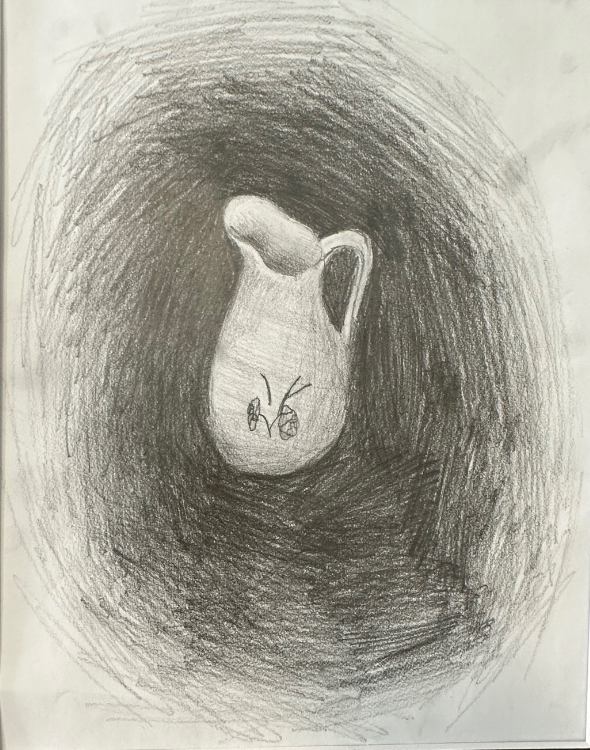The Foundation: Truth, Beauty, and Goodness (TBG)
The themes of truth, beauty, and goodness, known as TBG at Regina Angelorum Academy (RAA), are the foundation of a Classical Liberal Arts Education. Students encounter truth, beauty, and goodness through various disciplines including nature studies, poetry recitation, analysis or construction of an argument, and the application of math. Each of these disciplines is woven into the fabric of the RAA school community.
Each trimester, students study the work of one composer and one artist. A new piece of art from the selected artist or composition from the selected composer is introduced to students every two weeks. This year, during first semester, students have been studying the art of Mary Cassatt and the music of Clara and Robert Schumann.
Truth, Beauty, and Goodness: How RAA Students Study Art
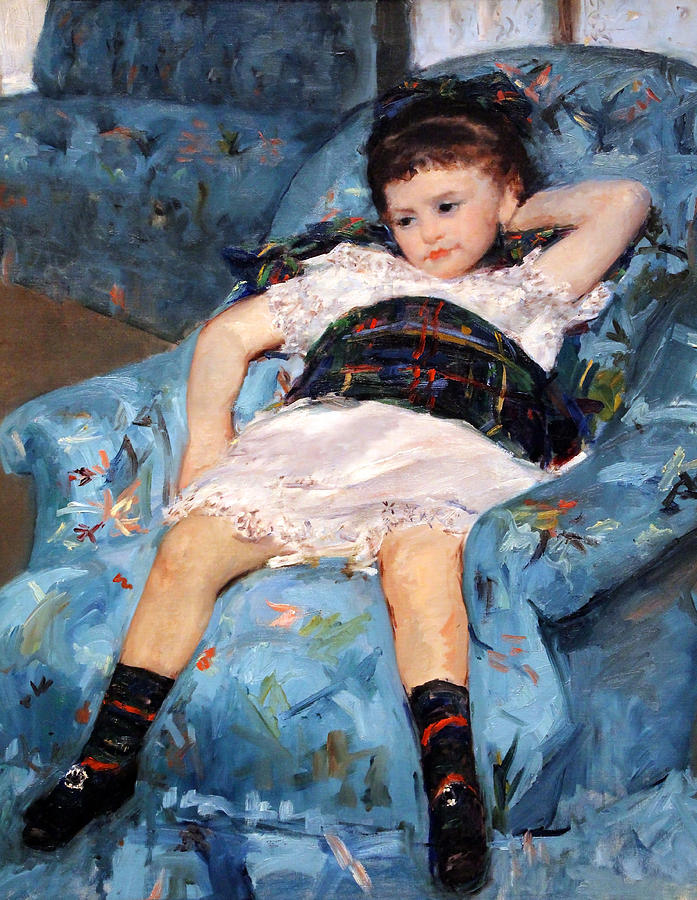
Little Girl in a Blue Armchair | Mary Cassatt, 1878
When studying art, a copy of the artwork is provided to students and placed upside down on their desks. Students are guided to turn it over, study it for 2-3 minutes, and then turn it face down again.
Next, students take turns narrating what they remember from the artwork. In addition to the narration, the students in upper grades will comment on the artist’s mood, intent, and the symbolism discovered in the artwork. After two weeks, students refer to the artwork and try to create a copy of the master work. Please see a few examples in the Student Gallery at the end of this post.
Why Narration Matters in Classical Education
Regina Angelorum Academy students spend time regularly practicing the skill of narration to assimilate knowledge. Narration is a classical pedagogical method of telling or writing back what is read, heard, observed, or experienced. It is through the children’s narrations that the ideas and ideals, set forth like a banquet before the children, are digested. We believe the Holy Spirit of Jesus Christ to be ever-present as the unique and sacred personality of each child is nourished by this feast.
Truth, Beauty, and Goodness: How RAA Students Study Music
At Regina Angelorum Academy, we believe that music education is fundamental to developing the whole person. Music is a unique language of human expression and points us through beauty and emotion, to reason, and to God Himself.
RAA’s focus on music aligns with the classical Quadrivium which includes music as one of the four core subjects. In the ancient world (along with arithmetic, astronomy, and geometry), music was a means to understanding how the world is ordered and how that order reflects the beauty and rational mind of the Creator. Students are introduced to music as a pathway, enabling them to recognize beauty, and what is true and good.
As children grow into elementary and middle school, these fundamentals are introduced early and are integrated into the classical curriculum based on the era and world events students are studying. Composers and music from the Middle Ages through the Baroque and Classical periods are examples of sacred and secular selections studied to bring the classical curriculum to fruition.
First Trimester Artist: Mary Cassatt, American Painter (1844-1926)
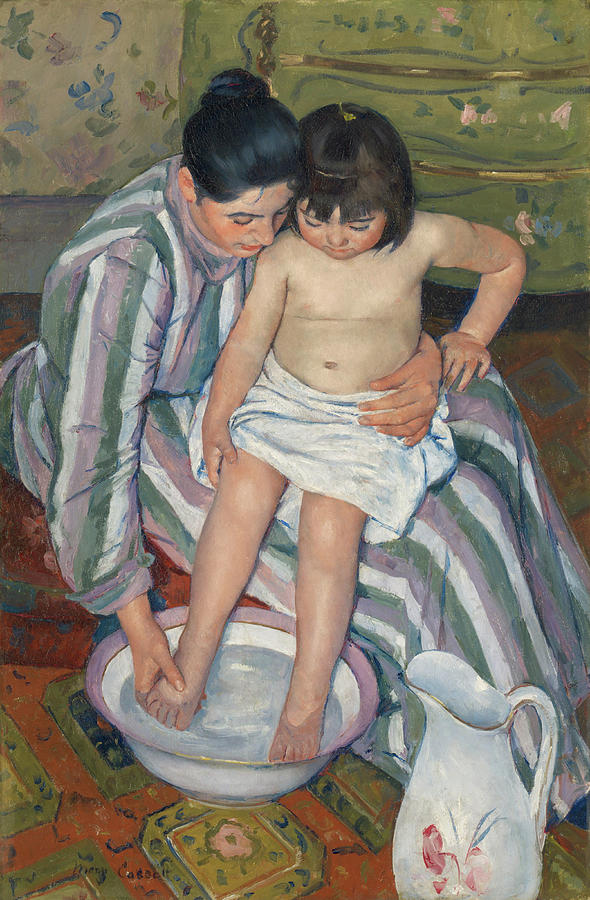
The Child’s Bath, 1893
Mary Cassatt, born in a suburb of Pittsburgh, PA was an Impressionist painter who visited France as a child. She was tutored in art during her childhood and later attended the Pennsylvania Academy of Fine Arts in Philadelphia. After a short time, she departed from the academic approach to art education. She moved to Europe to learn through time with artists including Jean-Leon Gerome and Thomas Couture. Her works were exhibited in the Paris Salon five times.
In 1874, she moved to Paris permanently. Cassatt became friends with Edward Degas, who admired her art, and his art deeply influenced hers. A Japanese exhibition later influenced her, and her artwork and style shifted. While she was prolific at drawing, she did not hesitate to explore using pastels.
Cassatt spent the majority of her life with a group of artists in and around Paris. She painted contemporary women of the era with a special interest in painting women as caretakers of their children.
First Trimester Musicians: Clara (Wieck) Schumann (1819-1896) and Robert Schumann (1810-1856)
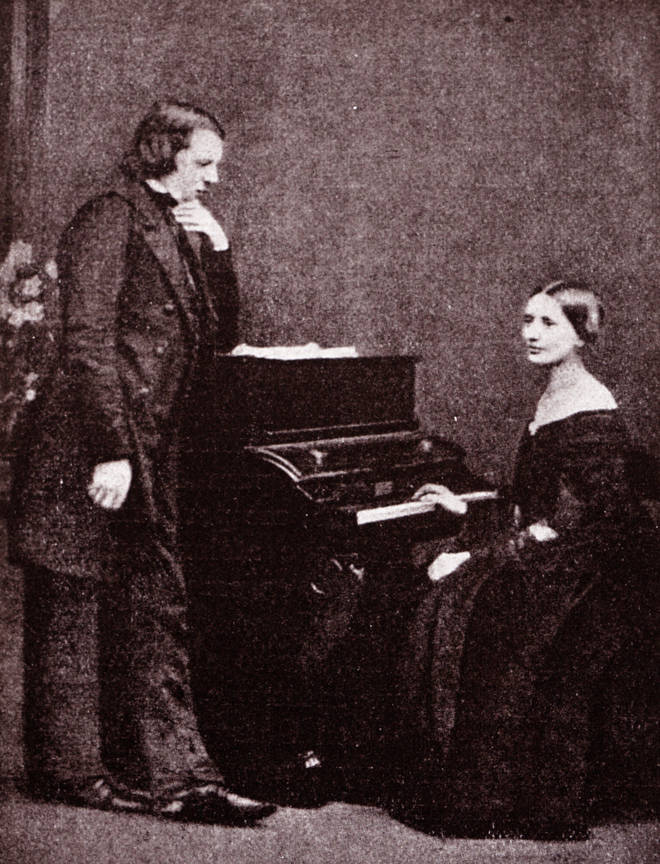
Clara and Robert Schumann | Source: classicfm.com
Clara Wieck Schumann was born in 1819 in Leipzig, Germany. A piano prodigy by age five, the Austrian Court elected Clara Schumann to the prestigious Society of the Friends of Music in 1838.
Robert Schumann, born in 1810, began studying piano at age six. He was influenced by Austrian Composer Franz Schubert and German poet Jean Paul Richter.
While Robert enjoyed studying music, he attended law school in 1828, but preferred music and spent more time composing. Robert Schumann studied music under Friedrich Wieck, whose 9-year-old daughter, Clara, excelled as a pianist. He composed prolific pieces and symphonic studies for seven years studying under Wieck. During this time, he also fell in love with Wieck’s daughter Clara. When Schuman n proposed marriage, Clara’s father forbade it. The separation was difficult and during this time, Schumann composed his famous Fantasy in C Major and other significant works.
Eventually, despite Wieck’s disapproval and second denial of Schumann’s proposal, Robert and Clara married in 1840. While most of the works he is known for were composed in 1840, Clara significantly influenced his future musical compositions which grew to include symphonies, concertos, scherzos, and his most challenging work, a “secular oratorio,” Das Paradies und die Peri (Paradise and the Peri). The Schumanns raised a family with eight children, composed, and regularly toured and performed.
Truth, Beauty, and Goodness At Home
Each semester introduces a new artist and new composer. RAA families are encouraged to discuss the artwork and listen to the trimester composer together. Bringing prints of the artwork home for observation, narration, and discussion bring the artwork to life. Listening to the music in the car or while preparing dinner offers a more comprehensive experience for students to converse with their families about the composition.
Asking the who, what, where, when, and why questions allow everyone to grow in appreciation of how art and music, like reading the Classics, lead us to truth, beauty, and goodness and toward the love of God.
Helpful Links
Truth, Beauty, and Goodness at RAA
Listen to the Schumann Spotify Playlist
RAA Truth Beauty Goodness Student Gallery
Below are a few examples of how students interpret and copy art:
